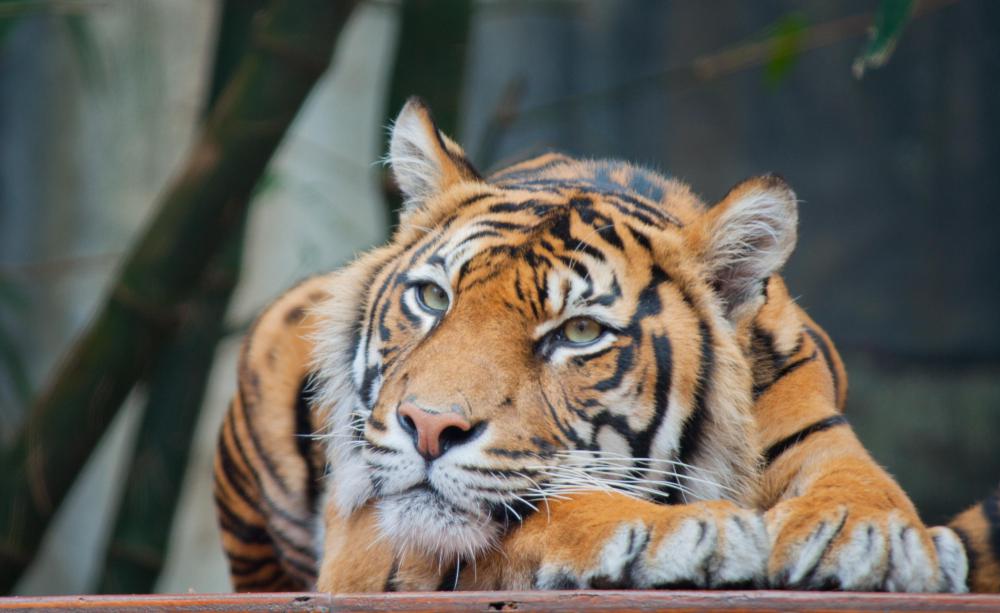At AllThingsNature, we're committed to delivering accurate, trustworthy information. Our expert-authored content is rigorously fact-checked and sourced from credible authorities. Discover how we uphold the highest standards in providing you with reliable knowledge.
What Was the Thylacine?
The thylacine was a carnivorous marsupial which endured until modern times in parts of Tasmania. As of the 1980s, the thylacine is presumed to be extinct, because the last recorded specimen was observed in the 1930s. These interesting animals are often cited as an example of convergent evolution, and numerous mounted specimens can be seen on display in museums in both Europe and the Australian region. Many of these museums also have collections of skeletons and other pieces of thylacine specimens.
Like other marsupials, the thylacine would not have generated a placenta to support embryos in the body as they developed. As a result, thylacines were born prematurely and forced to climb into pouches on the mother's body to finish developing. Given that the thylacine was a carnivore, this may have been a bit inconvenient for the mother as her young grew.

You may hear the thylacine called the “Tasmanian Tiger” or “Tasmanian Wolf.” Physically, these animals strongly resembled dogs, with skeletons which are so similar to that of the modern dog that it can sometimes be hard to distinguish the difference. They were marked with distinctive black stripes, probably designed to help camouflage the animals at they hunted, just like the stripes of the tiger.

Existing specimens suggest that the thylacine was yellowish-gray to sandy brown in color. These animals died out in Australia thousands of years ago, probably in response to pressure from animals like dingos, along with human hunters. Aboriginal artwork from the period suggests that the thylacine was treated as a food source by many people. In the more sheltered environment of Tasmania, the thylacine endured into the 20th century, when European settlers killed the animals off out of fear about livestock predation.
The evolution of the thylacine is sometimes called “convergent” because the animals adapted to fill a niche which was filled by dogs and wolves in other parts of the world. This extinct marsupial found a gap to fill and it filled it, becoming a top-level predator which fed on a variety of other marsupials. The last known living thylacine was “Benjamin,” a single individual who died in captivity in the 1930s.
There has been some talk of trying to clone the thylacine, using genetic material preserved in museum specimens. This talk is unlikely to ever develop into a cloning program, for a variety of reasons, not least of which is the fact that humans are struggling to save endangered species with living individuals, and such a program would detract from these efforts.
Frequently Asked Questions
What was the thylacine and where did it live?
The thylacine, also known as the Tasmanian tiger or Tasmanian wolf, was a carnivorous marsupial native to Australia, Tasmania, and New Guinea. It was the largest known carnivorous marsupial of modern times and is believed to have become extinct in the 20th century, with the last known individual dying in captivity in 1936.
Why is the thylacine often referred to as a "tiger"?
The thylacine earned the nickname "Tasmanian tiger" due to the distinctive dark stripes across its lower back and tail, reminiscent of a tiger's pattern. Despite its feline moniker and superficial resemblance to canids, it was not related to tigers or wolves but was a marsupial with a unique evolutionary lineage.
What did the thylacine eat and how did it hunt?
The thylacine was a carnivore that primarily hunted at night (nocturnal). Its diet consisted of small animals such as birds, kangaroos, and wallabies. It was an apex predator, using stealth and its strong jaws to catch and consume its prey, although specific hunting strategies remain largely speculative due to the lack of direct observation.
How did the thylacine become extinct?
The extinction of the thylacine is attributed to a combination of factors, including habitat destruction, competition with dogs and humans, and a relentless bounty scheme by the Tasmanian government, which incentivized hunting them. Disease and the introduction of dogs may have also contributed to their decline, leading to their extinction in the wild.
Are there any efforts to bring back the thylacine?
There have been discussions and speculative projects about using genetic technology to resurrect the thylacine, often referred to as de-extinction. However, these efforts face significant scientific and ethical challenges, and as of now, there has been no successful attempt to bring back the thylacine from extinction.
What is the significance of the thylacine in scientific research and conservation?
The thylacine remains an important subject in conservation biology and a symbol of human impact on species extinction. Its demise has provided valuable lessons on the importance of preserving biodiversity and the consequences of human activities on ecosystems. Ongoing research into its genetics and ecology continues to inform conservation strategies for other endangered species.
AS FEATURED ON:
AS FEATURED ON:












Discuss this Article
Post your comments